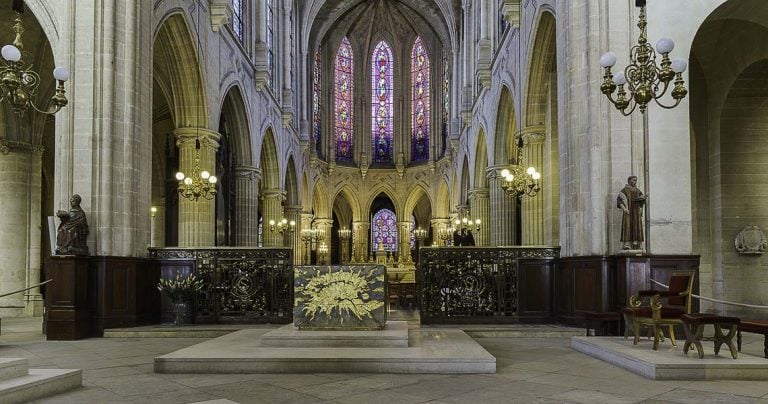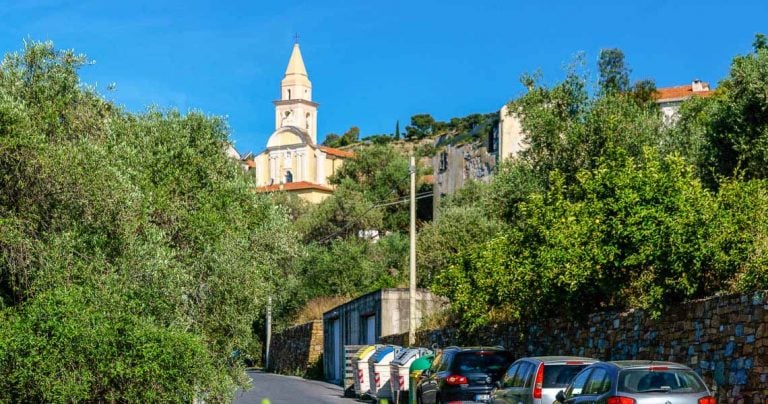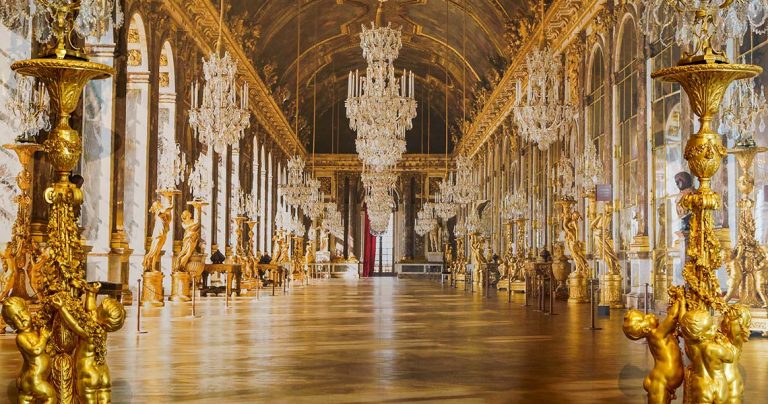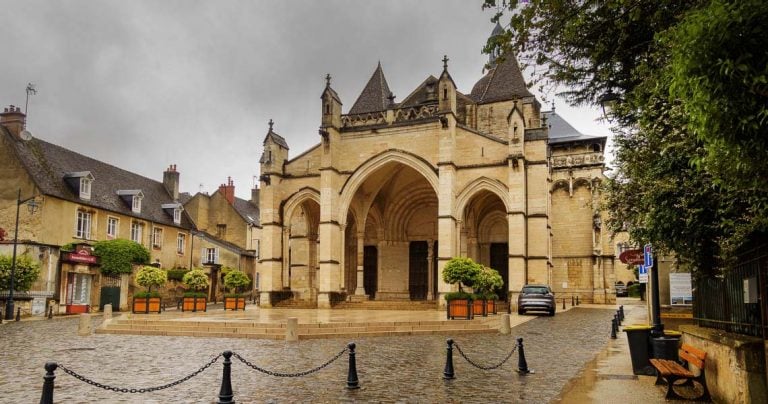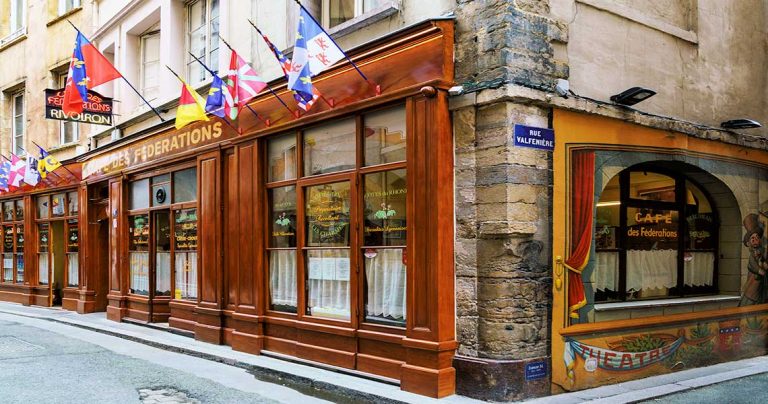Musée des Beaux-Arts de Lyon
One of the advantages of visiting the Musée des Beaux-Arts de Lyon, the largest museum outside of Paris, is that it has relatively few queues, at least that was the case on the two days in June that we attended.
Tour groups were conspicuous by their absence. But, school groups proliferated, and, like most school kids, they made their presence known, particularly at lunchtime in the cloister gardens. If you want to avoid the little ankle-biters, go early and go on the weekend.
Brief History
An abbey in a previous life, the origins of the site date back to the fifth century. By the Middle Ages, an abbey was well-established. The nuns who governed the Abbey came from the nobility, making it one of the richest in France. Anne de Chaulnes, then abbess, decided in 1659 to rebuild the Abbey, which was then called the Royal Abbey of Les Filles de Saint-Pierre.
The French Revolution in 1792 saw the thirty or so nuns still present expelled. Apart from the destruction of the église Saint-Saturnin, the abbey came through relatively unscathed. The Abbey’s other church, the église Saint-Pierre, still exists and now houses the Sculpture Collection.
Cloister Gardens
Access to the Gardens and the Museum is via 20 Place des Terreaux. Police are on duty, and a bag check is required. In Rue du Président Edouard Herriot, an alternative entrance previously existed, but this was closed following the 2015 terror alert.

The Gardens are free and are usually busy, particularly at lunchtime. This islet of greenery, protected from urban noise by the secular walls, covers about 1,200 m2. Large oak, birch and lime trees shade the alleys of the garden. The benches set under their foliage provide a cool place to relax and while away the time.
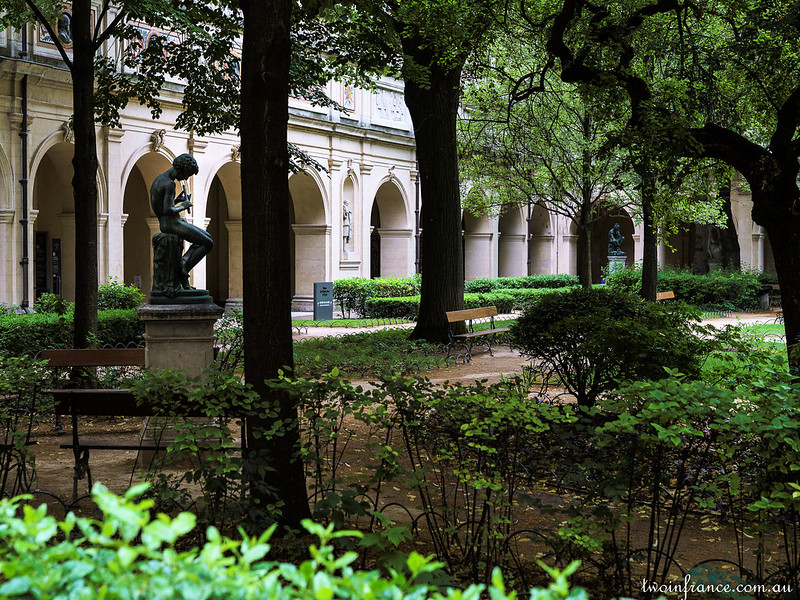
Here you can discover statues by Auguste Rodin, Emile Antoine Bourdin, Léon Alexandre Delhomme, Jean Larrivé and some other sculptors. In the centre is the circular basin surmounted by an ancient sarcophagus and a small statue of the Greek god Apollo, god of the arts, after Jean Baptiste Vietty.
Refectory
The Refectory (dining room) is on the left-hand side as you enter the museum from the gardens, just before the reception. It is used mainly for receptions, and a retractable barrier prevents entry to the public. But, you may be able to sneak a photograph if the door happens to be open.
The interior decors of the Refectory and the Staircase of Honour are the only decorations of the 17th-century that remain, witnesses to the project of Anne de Chaulnes. Thomas Blanchet designed these two baroque elements (1675 to 1684) and entrusted the work to sculptors Simon Guillaume and Nicolas Bidaut and the painter Pierre-Louis Cretey.

Simon Guillaume and Nicolas Bidaut created the stucco bas reliefs. At the same time, Pierre-Louis Cretey painted the Miracle of the Loaves and the Last Supper located at either end of the Refectory. The stuccoes are representations of monastic virtues, protective saints of the city of Lyon, the abbey and the abbess, scenes from the life of Christ and the Virgin.
Restorations of the Refectory first took place in 1870-1875, followed by 1946-1947 and 1996-1998. The latter permitted the cleaning of Simon Guillaume’s stucco bas reliefs. Finally, in 2010, two teams of restaurateurs restored the two Cretey paintings in the Refectory.
Sculptures
While there are many sculptures in the gardens, the main collection is downstairs in the original church, église Saint-Pierre. This church, probably founded in the 7th century, has a narrow 12th-century façade, still visible on the Rue Paul Chenavard. It was classed, as well as the porch and the two gates, as historical monuments on February 16, 1921. The wooden doors are from the 18th-century.

The Sculpture Collection presents an evolution of sculpture from the Middle Ages to the Renaissance. The 19th-century and the first part of the 20th-century hold a prominent place with a collection of works by Joseph Chinard and Antoine Bourdelle. In the chapel, masterpieces by James Pradier and Auguste Rodin attract attention.

The works of Rodin constitute one of the most prominent collections in France, after that of the Rodin Museum in Paris. The collection is made all the more significant as Rodin himself gifted it to the Museum.
Antiquities
The Department of Antiquities, located on the 1st floor, lets you explore the archaeology of the Mediterranean region, from the Pharaoh’s Egypt to the Roman Empire. The Near and Middle East gallery opens up Mesopotamia, Iran, Persia, Cyprus, and Syria.
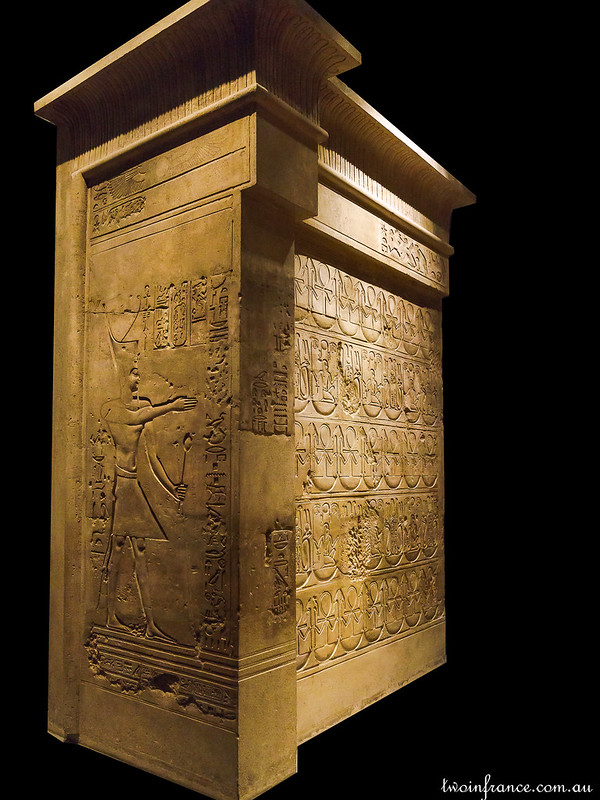
In the last section of Greek antiquities, southern Italy, Etruria and the Roman Empire, visitors can see the Greek sculpture, Kore (meaning “young girl”), one of the museum’s masterpieces.
Partial closing of the museum occurs between 12:30 pm and 2:00 pm. During our visit, it was the Antiquities section that closed during these hours.
Paintings
On the museum’s second floor, we enter the universe of the great European artists, from the 13th-century to the present day. For paintings from the 13th to the 18th centuries, works by Tintoretto, Perugino, Veronese, Rembrandt, Rubens and Jordaens can be admired, as well as some works by German and Spanish painters.
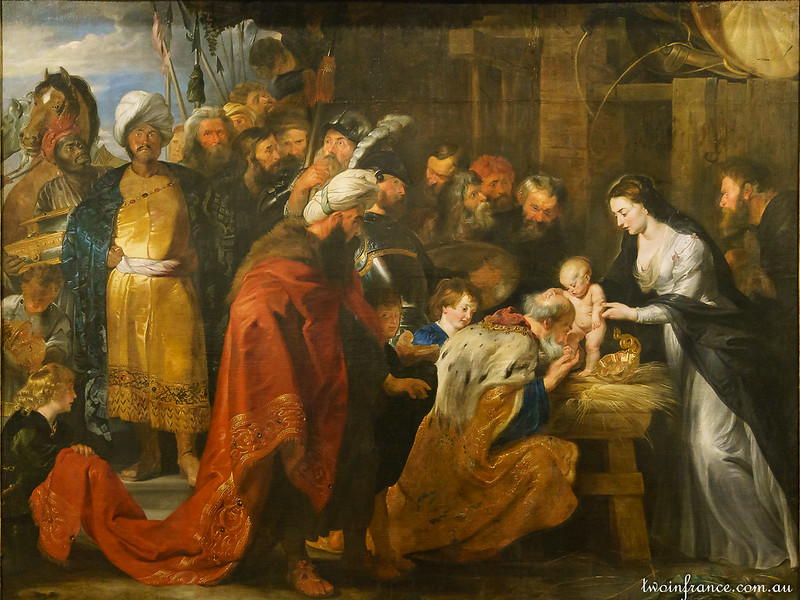
The great masters of the 19th-century are represented by Ingres, Géricault, Delacroix, and Courbet. The museum also presents an excellent selection of painters from Lyon with works by Fleury Richard, Pierre Révoil, Hippolyte Flandrin and Louis Janmot.
As seen in the Salon des Fleurs, the paintings of flowers have always been a dominant theme since the museum’s inception. This collection aimed to provide ideas to silk designers and underline the importance of the links between the museum and the silk industry in the 19th-century.
Manet, Renoir, Degas, Monet and Van Gogh represent the Impressionists and the avant-garde painters of the end of the 19th-century.
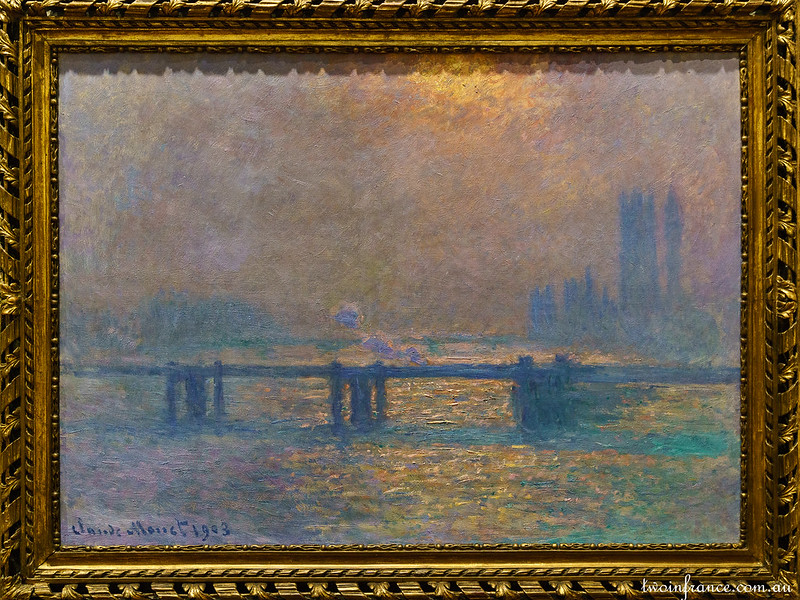
The works of Braque, Chagall, Matisse, de Stael, Bonnard and Dubuffet describe the 20th-century. In 1997, the legacy of the actress and collector Jacqueline Delubac added works by Léger, Picasso, Baconto, helping to make the museum one of the most prestigious in Europe.
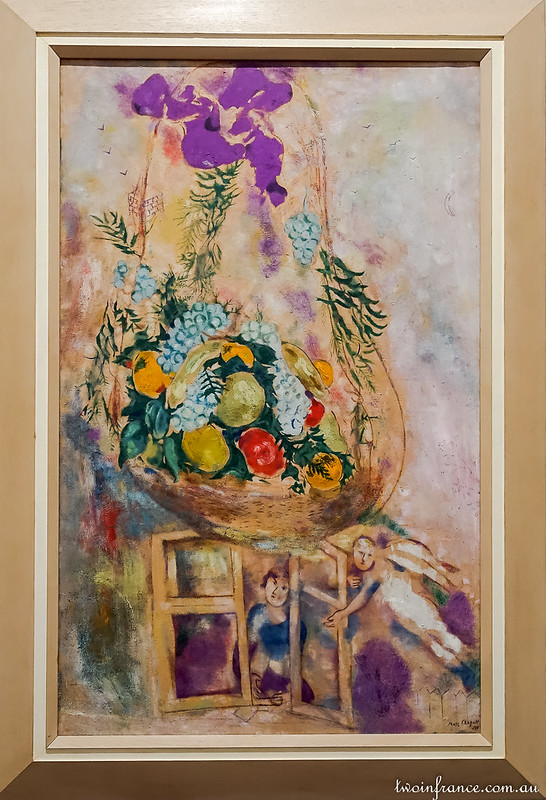
Art Objects
Goldsmithery, ivory ware, enamelling, glass making, carpentry and cabinet making are all represented in this department, as are Far Eastern ceramics of Korean, Chinese and Japanese sandstone.
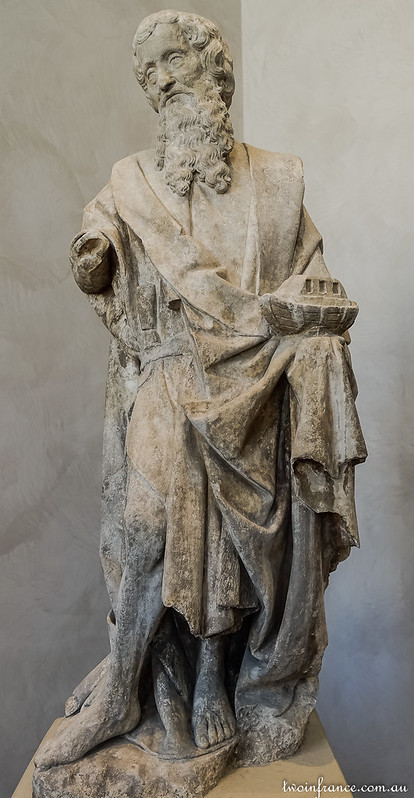
Art Nouveau is illustrated by Madame Guimard’s House, realised by Hector Guimard, her husband and prominent representative of this artistic movement.
Coins and Medals
Presented in its original setting of 1830, this collection brings together nearly 50,000 medals and coins, precious jewels and treasures of all times. This collection of coins is the second-largest in France after the Bibliothèque Nationale de France in Paris. One can admire the gold piece of Vercingetorix or that of Dagobert, struck by Saint Eloi.
Discovered in 1993, during the construction of the underground car park under the museum, the Terreaux Treasure, buried in the Hundred Years War shortly before 1360, includes 543 gold and silver coins.
In addition to the Collections, the museum holds individual exhibitions throughout the year. These exhibitions are quite eclectic in style. The current exhibition pays tribute to Fred Deux (1924-2015) by dedicating the largest ever exhibition of his work. Previous exhibitions have been devoted to Matisse, the Renaissance, Jacqueline Delubac and Joseph Cornell.
An aggressive acquisition policy and various legacies should ensure that the Musée des Beaux-Arts will continue to hold its own as one of the World’s great museums.
Practical Information
20 Place des Terreaux, 69001 Lyon, France
+33 4 72 10 17 40
[email protected]
Open daily except Tuesdays and holidays from 10:00 am to 6:00 pm; Fridays from 10:30 am to 6:00 pm. Partial closing of the museum occurs between 12:30 pm and 2:00 pm
Metro: A and C, “Hôtel de Ville – Louis Pradel” station
www.mba-lyon.fr


